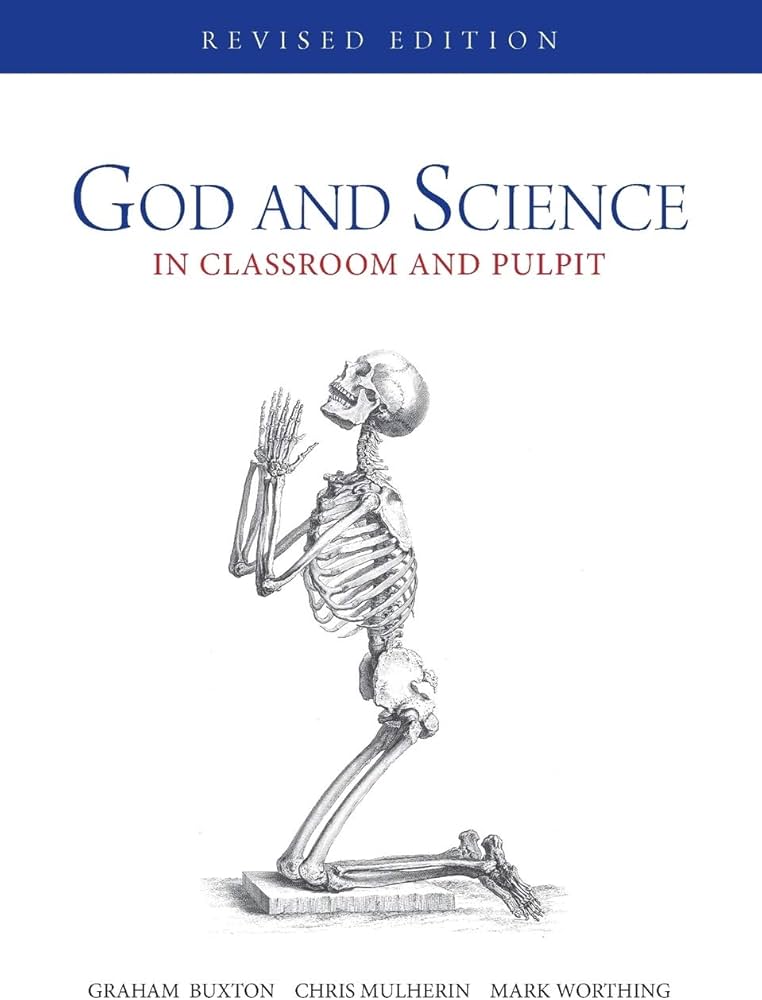Book reviewed by Charles Sherlock, July 2024
God and Science: In Classroom and Pulpit
by Graham Buxton, Chris Mulherin, and Mark Worthing
Reservoir, Victoria, Australia: Morning Star Publishing, 2018; 160 pages
ISBN 9781925208412, revised edition, paperback
AUD$25
The subtitle catches what this short book is all about: giving teachers and pastors tools to be true to faith in both God and science. The three authors are Christian theologians with scientific and educational backgrounds, and a passion for good science and sound theology.
So—does the book deliver? Before answering, a little more on the contribution of each author. Chris Mulherin (Chapter One) and Graham Buxton (Chapter Three) lay foundations through complementary surveys of the issues between “science and faith” (pp. 10, 43, even “science–faith debate” at p.46). This latter phrase, however, is unfortunate, since—as Mulherin later shows in different words, and Chapter Seven explores—science (or better, the scientific method) itself rests on faith assumptions.
Mulherin helpfully sketches nine issues in the relationship between Christianity (not just “religion”) and science. A key point is that the former is a worldview involving meaning; the latter focusses on mechanism. This highlights the distinction between science seen (wrongly) as a worldview—philosophical naturalism—and (properly) as methodological naturalism.
Buxton begins by giving four reasons as to why “those who are involved in pastoral ministry need to address the science–faith relationship” (p. 43): the significance of technology, media, apologetics, and what is positive in creation. Good stuff! A short survey of significant scientists who are Christian leads to a helpful assessment of three “models of the science–religion relationship” (p. 52): conflict, contrast, and complementarity.
Chapter Four (Buxton), “Integrating Science and Faith for Pastors and Teachers Today,” makes two main points: the importance of beauty in scientific discovery, and that science has limits, which calls for humility in its practice. These points are made beautifully, with Denis Edward’s work cited helpfully. A brief section on “Science and the Bible” quotes Billy Graham to ease Christian minds worried about evolution, but I found myself wincing at ancient peoples holding “a primitive worldview” (p. 71). Six suggestions for teachers and preachers conclude the chapter: useful, but they overlap with Worthing’s more “Australian” oriented insights in Chapters Two and Five.
The bulk of the book consists of four chapters (Two, Five, Six and Seven) by Mark Worthing, who has wide experience working in Lutheran schools in Australia and the USA, and in theological education. Chapter Two opens by contrasting the vast difference between the life settings of people in typical Australian congregations of today and a century ago. Worthing argues cogently for preachers to speak from the Scriptures into the life experience of today’s Christians, in which science-related matters are prominent. He takes examples from recent discoveries about the beginning and end of the universe to show how theology can be helpful—or not!
The classroom is the focus for Worthing’s contribution in Chapter Five. Writing from his own experience in Australia and the USA, he focusses on secondary education, where conflict around science is sharpest. The first half takes a welcome step away from the “usual suspects” to explore the resurrection of Christ in relation to issues in modern physics. The second half speaks directly, practically, and widely to classroom teachers, notably on curriculum issues in Australian public schools. Worthing is consistently positive: “the sciences are brimming with opportunities to talk about realities that transcend the material world” (p. 89).
Chapter Six is an excellent “Brief History” of science and theology. It would be an ideal text for Year 11 or 12 students to discuss, or a group in a church context. Worthing sketches three main periods in Western history: religion and science seen as united (pre-Renaissance); as complementary (from Francis Bacon on—and still in some quarters, notably Karl Barth); and regarded as in conflict (especially since Darwin). Worthing makes a strong case for moving beyond each position to a two-way conversation between them.
The assumptions behind science are the focus of Chapter Seven. The unhelpful ones that lie behind “folk science” and “folk theology” are exposed, and a sharp analysis made of the influence of Wittgenstein, Popper, and Kuhn on how science is perceived. These insights will assist teachers and pastors. But the long opening on the “how to” focus of education is not relevant, and pages 113–115 repeat 101–103 (which is where they belong).
The final—and longest—chapter is from Graham Buxton. This recaps the historical material, showing that Newton’s mechanistic worldview is poor theology. But the focus is on recent decades: Polkinghorne’s reading of the universe both from below and above is used to support a creative conversation between science and Christian faith. Quantum mechanics and Mandelbrot sets open out concepts of the Spirit, providence, emergence, and rupture in the “dance” of creation—exciting stuff, as is the use of Proverbs 6:9 and John 12:24! The final section is a stirring call to ground all Christian reflection in the doctrine of the Holy Trinity. This is a wise chapter.
If I have one reservation about this book, it is that potential readers may needlessly be put off by the repeated explanations of its origins. The Introduction needs rewriting to focus on the book’s distinctive contribution rather than its origins, while Acknowledgments can be an appendix. There are a few editorial slip-ups, such as incorrect page numbers in the Contents, and is the Introduction to Chapter Three really needed (pp. 42–46), or the first paragraph of Chapter Five (p. 76)? I urge ISCAST to do a third edition, taking these comments into account. Further, questions on each chapter will encourage groups to use it.
This short book’s distinctive contribution to reflecting on God and science is its focus on teachers and preachers, in Australian contexts, a task it does well but could do better. That said, it offers readers with a wider interest practical and care-full insights into seeing science positively through Christian eyes. It is most welcome.

